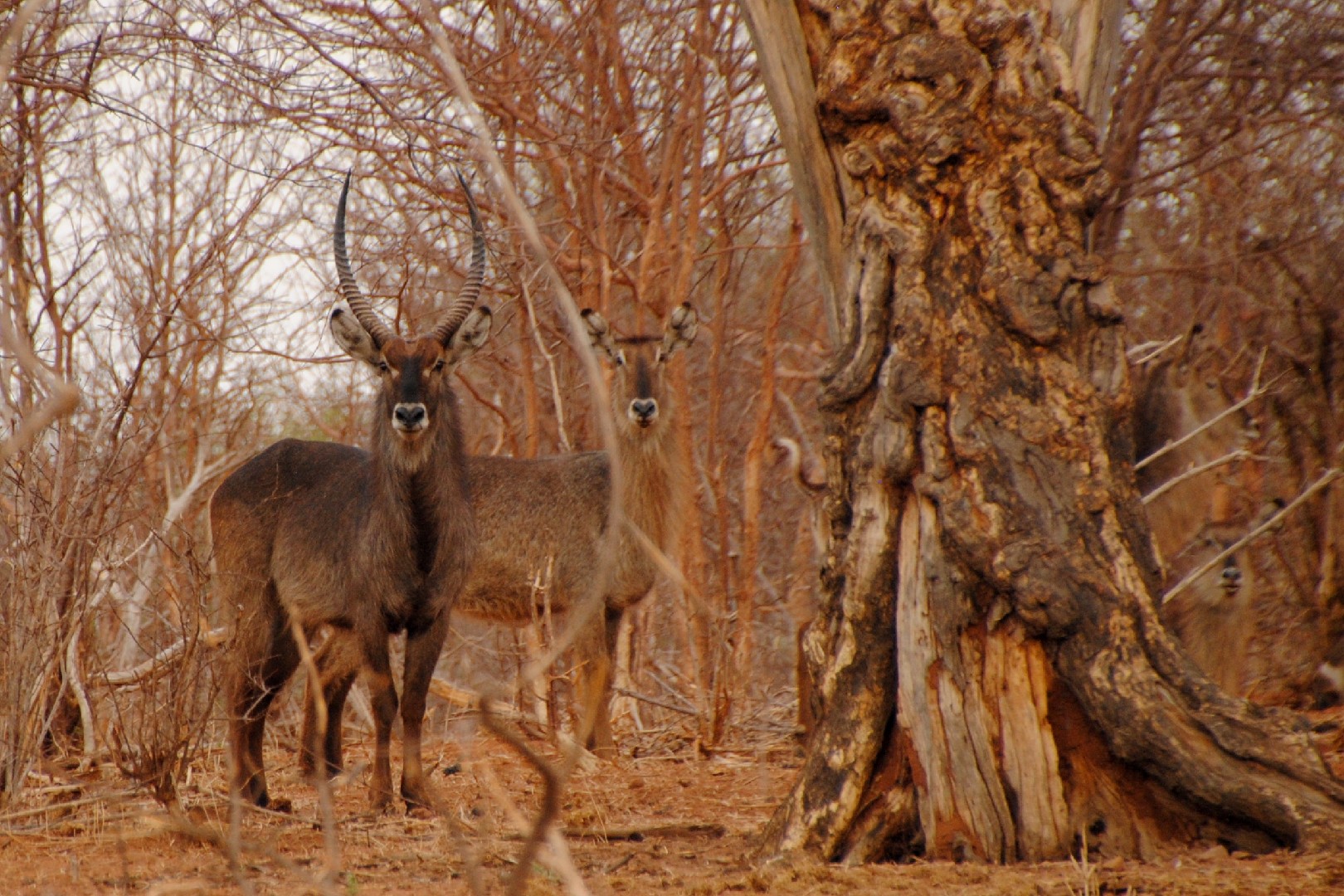Waterbuck
A species of Kobs, Also known as Rhodesian waterbuck Scientific name : Kobus ellipsiprymnus Genus : Kobs
Waterbuck, A species of Kobs
Also known as:
Rhodesian waterbuck
Scientific name: Kobus ellipsiprymnus
Genus: Kobs
Content
Description General Info
 Photo By diego_cue , used under CC-BY-SA-3.0 /Cropped and compressed from original
Photo By diego_cue , used under CC-BY-SA-3.0 /Cropped and compressed from original Description
The waterbuck is the largest amongst the six species of Kobus. It is a sexually dimorphic antelope, with the males nearly 7 percent taller than females and around 8 percent longer. The head-and-body length is typically between 177–235 cm (70–93 in) and the average height is between 120 and 136 cm (47 and 54 in). Males reach approximately 127 cm (50 in) at the shoulder, while females reach 119 cm (47 in). The waterbuck is one of the heaviest antelopes. a newborn typically weighs 13.6 kg (30 lb), and growth in weight is faster in males than in females. Males typically weigh 198–262 kg (437–578 lb) and females 161–214 kg (355–472 lb). The tail is 22–45 cm (8.7–17.7 in) long. The waterbuck is of a robust build. The shaggy coat is reddish brown to grey, and becomes progressively darker with age. Males are darker than females. Though apparently thick, the hair is sparse on the coat. The hair on the neck is, however, long and shaggy. When sexually excited, the skin of the waterbuck secretes a greasy substance with the odour of musk, giving it the name "greasy kob". The odor of this is so unpleasant that it repels predators. This secretion also assists in water-proofing the body when the animal dives into water. The facial features include a white muzzle and light eyebrows and lighter insides of the ears. There is a cream-coloured patch (called "bib") on the throat. Waterbuck are characterised by a long neck and short, strong and black legs. Females have two nipples. Preorbital glands, foot glands and inguinal glands are absent. The common waterbuck and the defassa waterbuck are remarkably different in their physical appearances. Measurements indicate greater tail length in the latter, whereas the common waterbuck stand taller than the defassa waterbuck. However, the principal differentiation between the two types is the white ring of hair surrounding the tail on the rump, which is a hollow circle in the common waterbuck but covered with white hair in the defassa waterbuck. The long, spiral horns curve backward, then forward. Found only on males, the horns range from 55 to 99 cm (22 to 39 in) in length. To some extent, the length of the horns is related to the bull's age. A rudimentary horn in the form of a bone lump may be found on the skulls of females. 
General Info
Lifespan
15-20 years
Diet
Waterbuck predominantly feeds on grasses, selecting the tender parts of grass to consume. This species also occasionally supplements its diet with fruits and fresh leaves, indicating a more diverse feeding habit. As a grazer, waterbuck shows a preference for grasslands and floodplains.
Appearance
Waterbuck is a large, robust animal with a visibly humped back and a deep chest. Covered in smooth, short hair, its coat varies from reddish-brown to brownish-grey. Males are distinguishable by their impressive horns, elliptically shaped and heavily ridged. While horns on males curve upwards then down at the tips, females lack these. Aging individuals exhibit darker coat coloration.
Behavior
Waterbuck is a social, diurnal herbivore exhibiting gregarious behavior within tightly structured groups. Preferences for fresh grasses require semi-aquatic habitats for foraging while dry seasons ignite migration patterns. Notably, dominant males defend their territory by marking with dung and vigorously confronting competitors.
Population
Decreasing